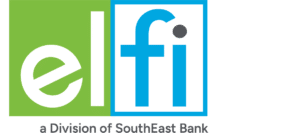Having a child in college can be daunting. You have to worry about their education, their safety, and how you’re going to pay for it all.
Typically, that means taking out loans to cover any education costs remaining after scholarships, grants, and college savings or 529 accounts have been exhausted.
When it’s time to consider additional funding, there are essentially two student loan sources available.
The first source is federal loans through the U.S. Department of Education, which administers the financial aid program (often referred to as FAFSA) sponsored by the government. The second source is the private student loan marketplace, where top-tier banks and credit unions offer low-interest loans to parents with good credit and income.
Why Some Parents Need to Pursue Additional Funds Beyond FAFSA
Some parents luck out and their child qualifies for tons of scholarship money, or perhaps even a free ride to their college of choice.
For most parents, there are gaps in funding that can exhaust savings and other sources of funds quickly.
During the 2021-2022 school year, private colleges averaged $43,775 in tuition and fees with out-of-state public school tuition averaging $28,238 and in-state tuition averaging $11,631.
With a four-year program, you can quickly find yourself needing to supplement the cost of education with loans. Let’s walk through the options.
Brief Overview of Parent Federal Loan Options vs Private Student Loans for Parents
As a general rule, you should exhaust federal loan opportunities before pursuing private student loans. However, federal Parent PLUS loans have high interest rates across the board, while parents with excellent credit and income may be able to qualify for lower rates through private lenders.
In the end, your decision may come down to the option with better benefits. Let’s weigh the pros and cons of federal Parent PLUS loans and private parent loans for college.
Federal Direct PLUS Loans for Parents
Direct PLUS Loans for Parents, or Parent PLUS Loans, are available through the Department of Education for schools participating in the Direct Loan program.
You must be the biological, adoptive, or stepparent of the child to qualify. Grandparents and legal guardians are not eligible for Parent PLUS loans unless they have legally adopted the child.
Here are some terms and benefits of Parent PLUS Loans:
- Congress sets all rates and fees annually — the fixed rate for the 2022-2023 academic year is 7.54%.
- The maximum allowable amount is the cost of attendance, less any financial assistance received.
- You can request deferred payments until six months after your child graduates, as long as they attend school at least half-time. Keep in mind that interest will begin to accrue when the funds are disbursed to your child’s school.
- There will be a credit check, but the rate is set and there is no reduced rate for someone with excellent credit (like with a private lender).
- There is a 4.228% loan fee for all Parent PLUS Loans.
- Federal loans have generous repayment plans and the Parent PLUS Loan is no different. You can apply for a standard, graduated, or extended repayment plan as well as Direct Loan Consolidation (your interest rate will remain the average of all loans).
- There are also generous forbearance and deferment options.
Private Student Loans as an Alternative
In the next section, we’ll do a side-by-side comparison of two private lenders, including a look at pros and cons. Here are a few things that are common to nearly all private lenders:
- You can easily get quotes from various industry-leading lenders through a student loan marketplace like Purefy. At Purefy, there are no hard credit checks when you discover rates. Only a soft credit pull is obtained, which doesn’t negatively impact your credit score. Once you select a lender and complete their application, you’ll undergo one hard credit pull, which is less problematic than multiple inquiries from different lenders.
- While most banks do charge fees to create a loan, private student loan lenders generally don’t charge application or origination fees.
- Most private student loan lenders offer both fixed and variable rate loans.
Where Are the Best Deals for Private Parent Student Loans?
Interest rates are increasing and likely will continue to increase through 2023. However, the private student loan marketplace still has some great rates available.
If you have high income and excellent credit, you may qualify for the lowest interest rates offered by lenders. Just be sure to compare the private student loan perks as well. For instance does the private lender offer forbearance or deferment plans?
What to Compare While Shopping for Private Student Loans for Parents
There are numerous factors to consider while shopping for the best private parent loans for college. In addition to finding the lowest rates, you’ll want to watch out for any fees the lender may charge, look for benefits like autopay discounts or forbearance options, and weigh the other pros and cons of each lender.
Here’s an overview of what to consider when shopping for private student loans for parents.
Low Rates
While the federal Parent PLUS Loan rates for 2022-2023 are fixed at 7.54% regardless of credit history or income level, private parent loans for college range between for fixed rate loans and 0.94% and 12.99% for variable rate loans, among Purefy’s recommended lenders.
With excellent credit and income, you could capture a rate well below the federal level.
No Loan Fees
Unlike a mortgage, private student loan lenders don’t charge origination or application fees. You can get a free rate quote through a marketplace like Purefy with no obligation to move forward with the loan.
The 4 Best Companies for Private Student Loans
Our Top-Rated Picks for 2023 Offer Low Rates and No Fees
Option to skip a payment once a year

In-school deferment available if you return for another degree

Optional $25 payment plan during school to reduce interest after graduation

1% Cash Back Graduation Reward program
Fixed Rate
Variable Rate

Fixed Rate
Variable Rate
Private Lender Comparison
Let’s compare the terms and eligibility requirements between two top-tier private student loan companies, along with a few pros and cons of their programs.
Earnest
Eligibility Requirements:
- A minimum credit score of 650
- Must be a U.S. citizen or permanent resident
- Must earn at least $35,000 per year
- Your child must be enrolled at least half-time in a Title IV-qualified four-year college
Terms:
- Flexible repayment terms available for 5, 7, 10, 12, and 15 years
- You can borrow between $1,000 and the total cost of attendance
Pros
- Save 0.25% by signing up for autopay
- You can opt to skip one payment each year
- There is a 9-month grace period following your child’s graduation (which is longer than most companies)
- Forbearance available for up to 12 months
- No late fees
- In-house loan servicing with their ‘Client Happiness Team’
Cons
- No customer service support available on weekends
- No co-signer release if you opt to cosign a loan with your child — refinancing is necessary to be dropped as a cosigner
College Ave
Eligibility Requirements:
- A minimum credit score of 660
- You must make at least $35,000 annually
- You must be a U.S. citizen or permanent resident
- Your child has to be enrolled in a Title IV-qualified four-year college at least half-time
Terms:
- Repayment terms between 5 and 15 years
- You can borrow between $1,000 and the total cost of attendance
Pros:
- You can opt to have $2,500 disbursed directly to you
- Save 0.25% by signing up for autopay
- Fast application and approval process to disbursement
- Up to 12 months of forbearance in three-month increments
- Cosigner release available after 24 payments (should you opt to cosign)
- International students can qualify with a cosigner who is a U.S. citizen or permanent resident
Cons:
- No deferring payments or grace period while the child is in school
- Unclear deferment and forbearance policies
- Loan servicing/customer service handled by a third party
How Do I Find the Best Private Student Loans for Parents?
As technology grows more sophisticated, it’s no longer necessary to contact each individual bank or credit union and submit a loan application to get a rate quote.
In the past, the legwork was not only time-consuming, it also resulted in multiple hard credit inquiries (which can lower your credit score).
Luckily, things are easier today. Through Purefy’s rate comparison tool, you’ll complete a short form before you are presented with real-time rates for multiple lenders.
From there, you can compare the information to see what offer might work best for your circumstances. There is no cost and no obligation to proceed. Weigh your options and shop around for the best offer but consider the overall loan package (including fees and any potential benefits) before deciding on a parent student loan.
Need a Private Student Loan? Check Out the Top Lenders of 2023.
Compare interest rates and perks to find the best lender for you.
















